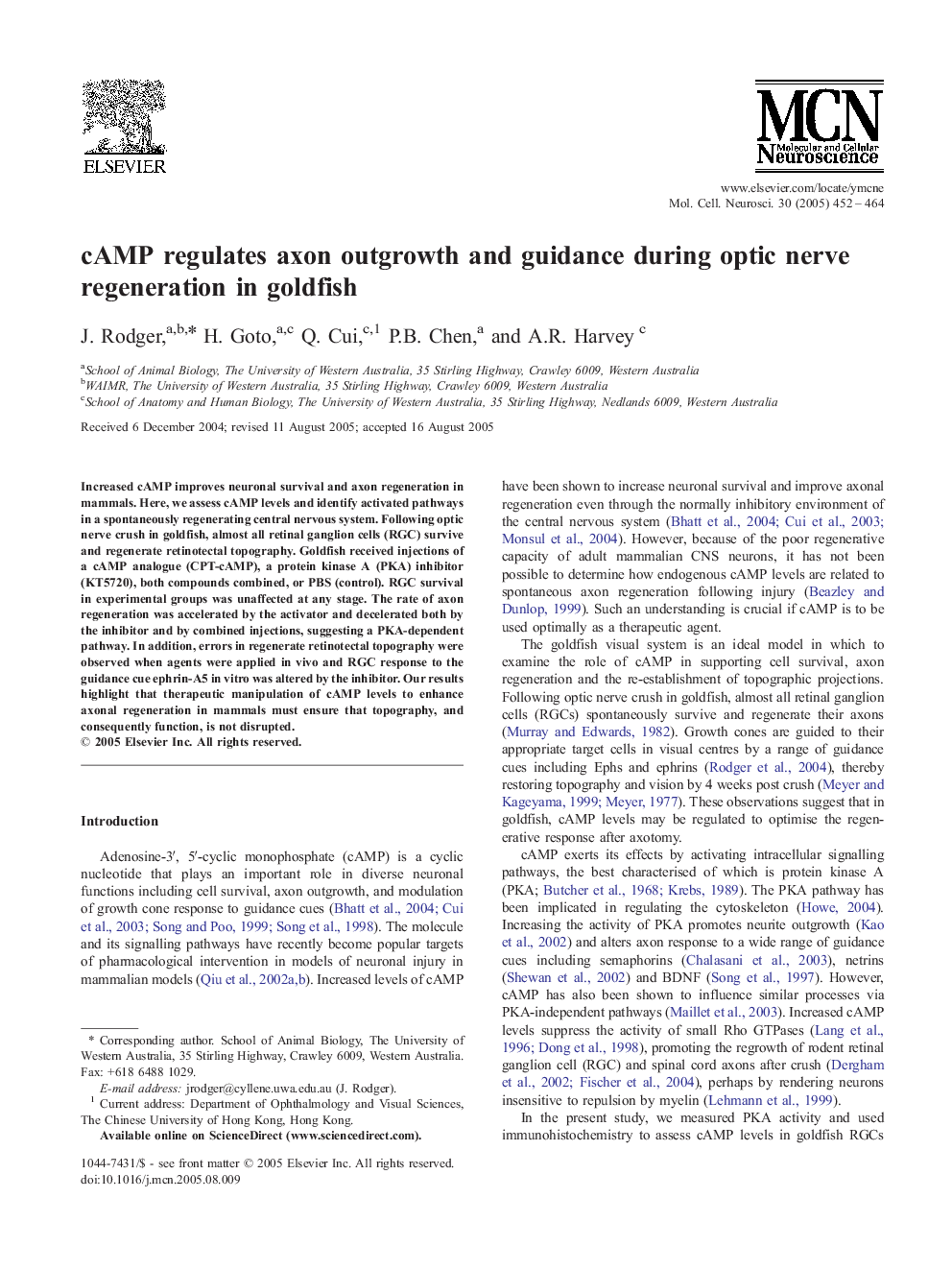| Article ID | Journal | Published Year | Pages | File Type |
|---|---|---|---|---|
| 10956813 | Molecular and Cellular Neuroscience | 2005 | 13 Pages |
Abstract
Increased cAMP improves neuronal survival and axon regeneration in mammals. Here, we assess cAMP levels and identify activated pathways in a spontaneously regenerating central nervous system. Following optic nerve crush in goldfish, almost all retinal ganglion cells (RGC) survive and regenerate retinotectal topography. Goldfish received injections of a cAMP analogue (CPT-cAMP), a protein kinase A (PKA) inhibitor (KT5720), both compounds combined, or PBS (control). RGC survival in experimental groups was unaffected at any stage. The rate of axon regeneration was accelerated by the activator and decelerated both by the inhibitor and by combined injections, suggesting a PKA-dependent pathway. In addition, errors in regenerate retinotectal topography were observed when agents were applied in vivo and RGC response to the guidance cue ephrin-A5 in vitro was altered by the inhibitor. Our results highlight that therapeutic manipulation of cAMP levels to enhance axonal regeneration in mammals must ensure that topography, and consequently function, is not disrupted.
Related Topics
Life Sciences
Biochemistry, Genetics and Molecular Biology
Cell Biology
Authors
J. Rodger, H. Goto, Q. Cui, P.B. Chen, A.R. Harvey,
